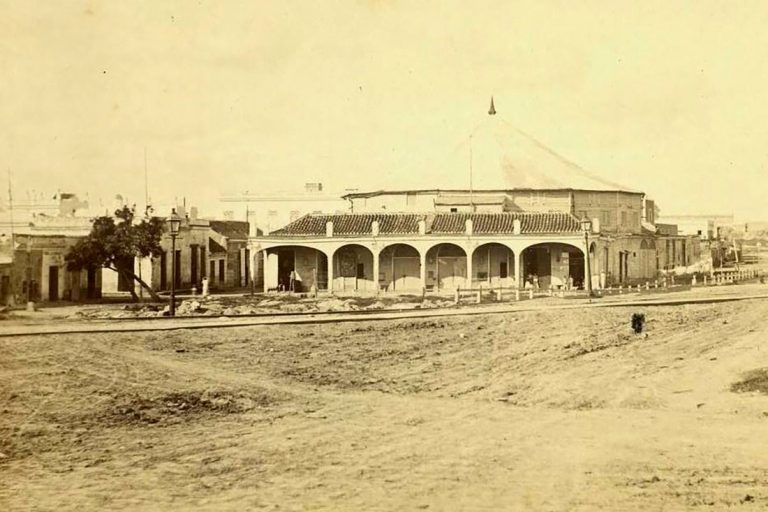By: Kenny Ortigas Guerrero
Why is it essential to recall the historical dates? Why, year after year, are actions organized so that they do not go unnoticed? For some, it is even sometimes tautological to go over a certain crucial moment of a certain time over and over again, and more so when new perspectives of analysis are not sought about this or more than one event.
The truth is that memory is part of the sociological construction of any human group united by common interests, is a nutritious source of knowledge and marks important “stops” in time to remind us of where we come from, to prop up areas that may fall into the omission and thus favor the breakdown of acquired moral and social values.
The days of remembrance enliven the collective spirit and do not allow the flame of culture to go out as a mark left by man on earth. For Cuba and its theater, the events of Villanueva keep communicating with the present. They speak of rebellion, homeland passion and are a testimonial document of one of the bloodiest events that occurred during the war against the Spanish colony.
During those days, the popular upheaval of some events remained that marked the inexorable decision of the Cubans to free themselves from the yoke that oppressed them, just three months ago Carlos Manuel de Céspedes had thrown himself into the fight and more recently, the Bayamians had dignified their posture of freedom burning his own town before it fell into Spanish hands.
The theater, voice of all times
In this context, the theater could not do anything other than, being a mirror and a reflection of its time, to show on stage all the energy that was beginning to overflow the island with an emancipation spirit. When we approached the staging that was on the billboard in the former “Circo Habanero” (name that the theater received at its inauguration in 1847, and that later in 1853 it would change to Villanueva), Perro huevero, aunque le quemen el hocico, of the authorship of Juan Francisco Valerio; We did not find words with great political pretensions, at least in its literal structure, rather it illustrated traditional scenes where Matías, a handsome and drunken man, did his own thing and drove his wife Nicolasa crazy.
But the theater has that enormous capacity, for centuries and centuries, to appropriate the elements that gravitate in reality, and place them in question, rearrange them in the imaginary and reinvent them in such a way that like a stealth knife penetrates into the surface of sensitivity. Let us remember that every work on earth starts from an intrinsic need to be carried out, and the theater is one of them. In this way, the Havana buffoons with total and immeasurable courage, since truly authentic art knows no fear or barriers, threw themselves into the ecstasy of circumstances and became promoters of the revolutionary spirit that attended the performance that night.
Perhaps we are not able to understand the dimension of that moment, amid cheers and uproar when they shouted “long live the land that produces sugarcane”, “long live Céspedes”, “long live free Cuba.” Theater, as a sociocultural trigger of the moment, exacerbated the feeling of freedom of all those present.
Its imprint
And yes, they paid heavily for that act of sublime dedication where fiction and reality merged in the same place. The truth, told with the translucent veil of irony and metaphors, can penetrate deeper than what is freely expressed in everyday life. That night, apparently marked forever by destiny, in which not only Villanueva was on fire in the performance of the actors, because our Martí, the eternal Martí of the Cuban men and women, was preparing to present La Patria Libre.
152 years after that memorable day, the sense of the drama persists in its desire to question reality, to question with carefree impetus the actions of the peoples and their struggle for the liberation from the hegemonic models that intend to continue dominating everything that lives in this planet, and goes even further, since it draws possible horizons for the reconciliation of man with the universe.
Today in Cuba, with essential criticism and without blood, such as the one caused by that body of volunteers in 1869, or many other examples where dictatorships and authoritarian positions have tried to undermine the art that is put at the service of the people.
The motherland does not drown her children, and theater and culture are them. By listening to their voices emanating from creation, the path to a better future will be forged. The story is not only to be read, it is to drink the accumulated wisdom from it and preserve its essences, which constitute a supreme value: our identity. Like an echo that takes over time and fights against oblivion, I can’t find a better way to honor those events, and the voices then take over my lips, and I repeat: “Long live the land that produces sugarcane “,” Long live free Cuba.”
Translated by: Aileen Álvarez García






